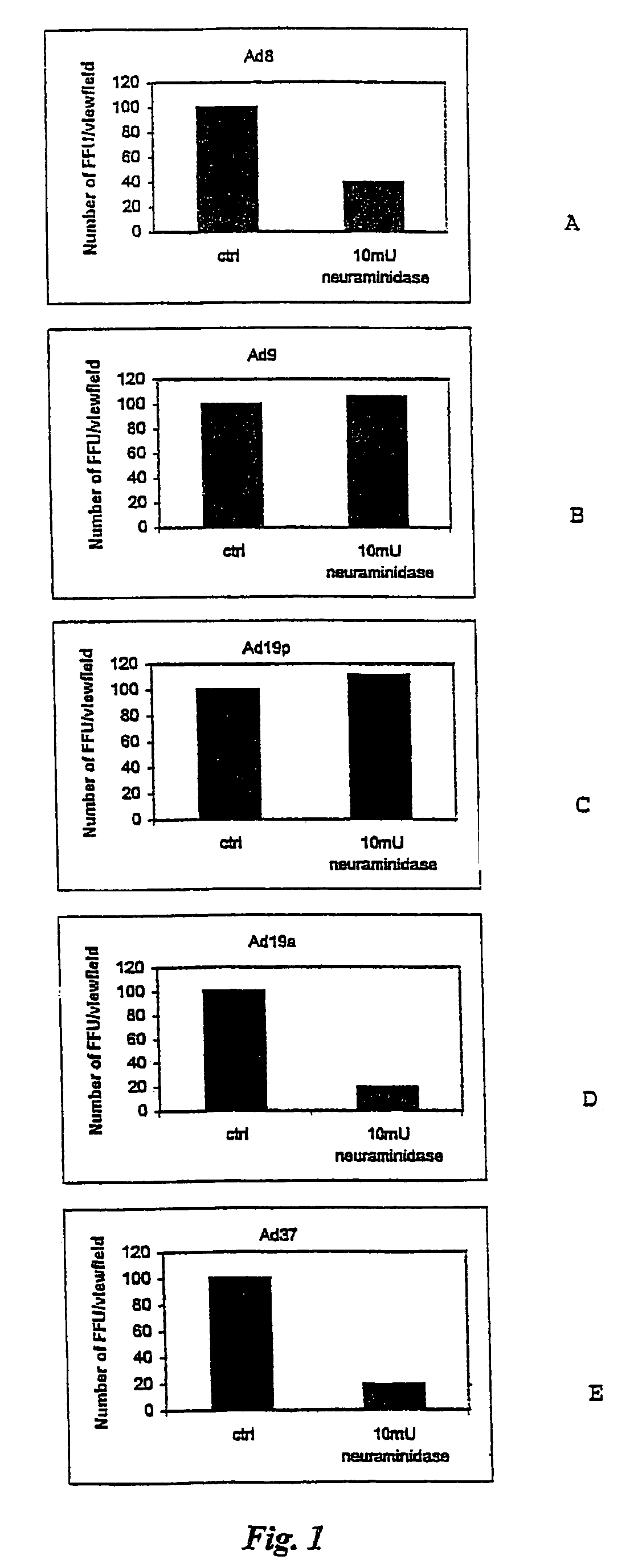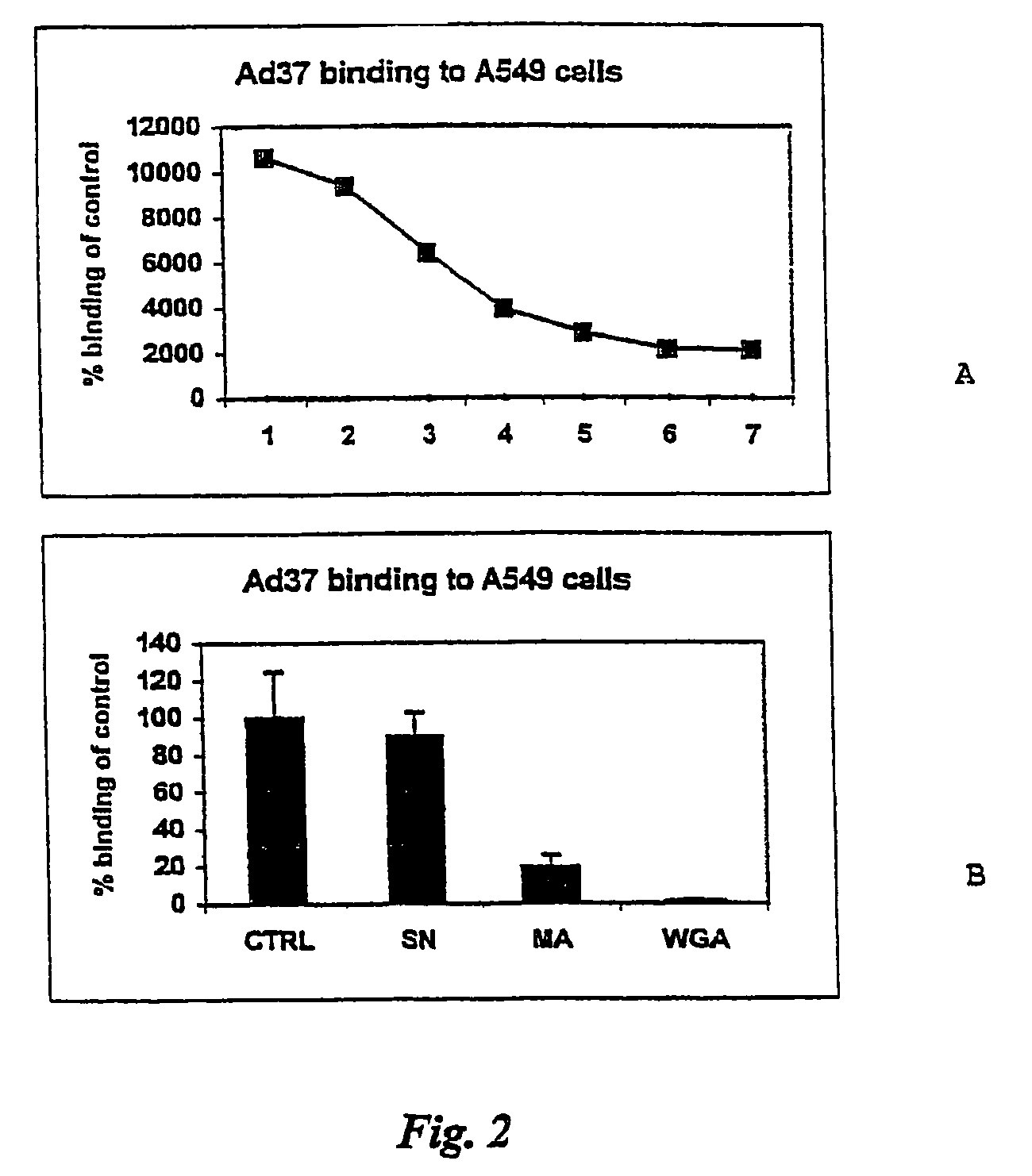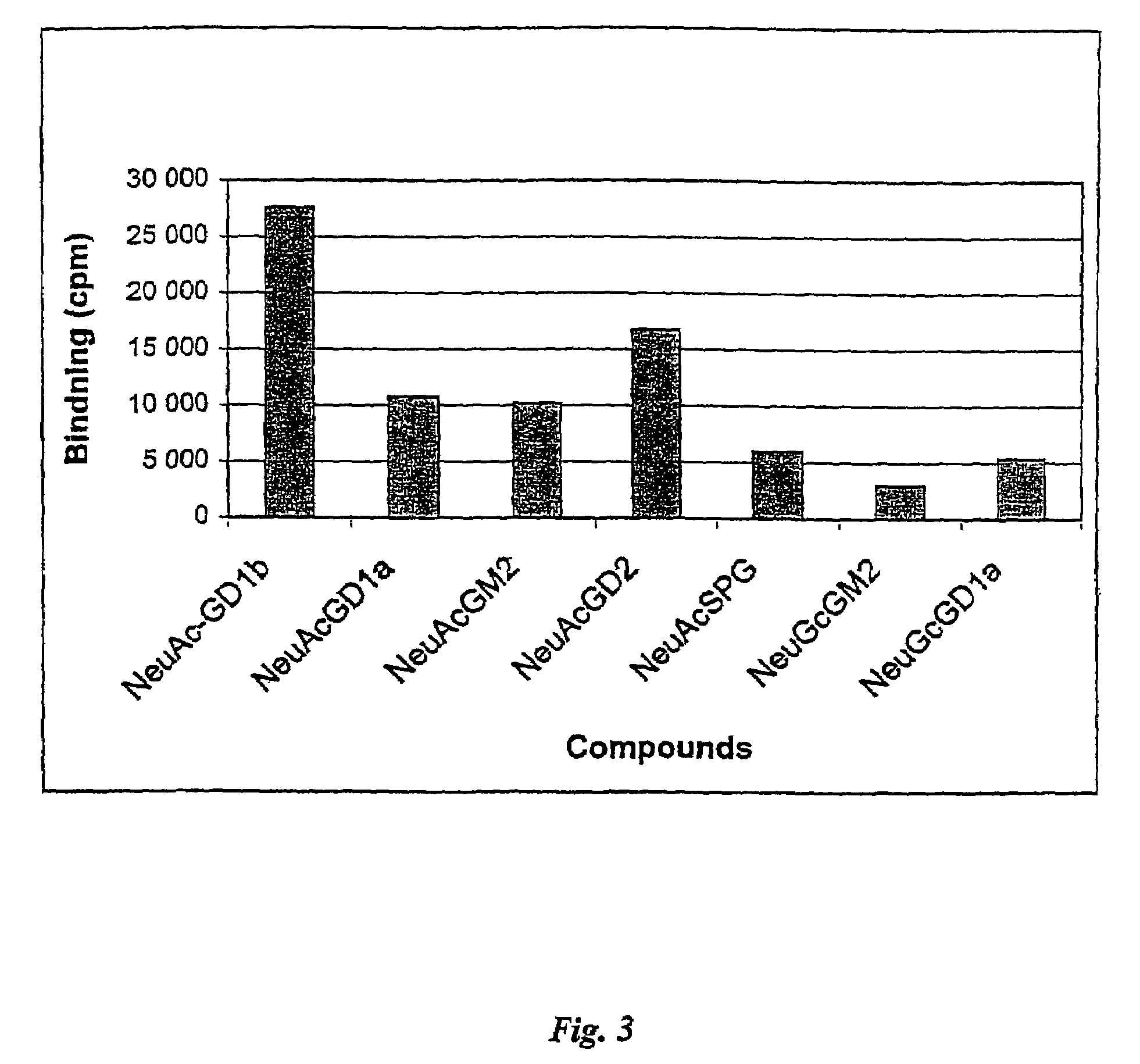Method and composition for the treatment of adenoviral ocular infections
a technology for adenoviral ocular infections and genital infections, applied in the direction of biocide, sugar derivatives, aminosugars, etc., can solve the problem of no clinically effective antiviral that inhibits the many, and achieve the effect of preventing viral binding
- Summary
- Abstract
- Description
- Claims
- Application Information
AI Technical Summary
Benefits of technology
Problems solved by technology
Method used
Image
Examples
example 1
Interference of the Binding of Ad37
[0041]Interference of the binding of adenovirus subtype 37 (Ad37) with the first step cellular receptor was studied using dextran sulphate and glycosaminoglycans, such as heparin and heparan sulphates. It was shown that such negatively charged molecules could impair binding of the virus. Further, it was demonstrated that Ad37 did not bind to CAR, the receptor which has been claimed to be the characteristic receptor of the subgenus D adenoviruses. In fact, Ad37 was shown to bind to Chinese hamster ovary cells that do not express CAR. This binding could be inhibited by neuraminidase specific for (2-3) linked sialic acid but not by neuraminidase for (2-6) linked sialic acid. Furthermore, lectins from Maackia amurensis specific for (2-3) linked sialic acid and wheat germ agglutinin binding to all types of sialic acid, blocked the binding. However, Sambucus nigra lectin, specific for (2-6) linked sialic acid, failed to block the binding. It was thus con...
example 2
Inhibitory Effect of Sialylated Glycoproteins
[0045]The effect of glycoproteins to inhibit Ad37 binding to Chang C conjunctival cells was investigated using the following glycoproteins: fetuin, mucin, orosomucoid and glycophorin A. The results are presented in table 2.
[0046]
TABLE 2Specific inhibition of Ad37 binding toChang cells with sialylated glycoproteinsConcentration of glycoproteincausing 50% inhibition ofMaximal inhibition ofAd37 bindingAd37 binding in %Glycoprotein type(μM)(500 μM)Fetuin42062Mucin889Orosomucoid7577Glycophorin A>50045
[0047]The results show that significant inhibition can be achieved with very low concentrations of glycoprotein, e.g. 8 μM mucin suffices to reach 50% inhibition and a concentration of 500 μM gives a 89% inhibition.
example 3
The Ability of Different Carbohydrates to Inhibit Ad37 Binding
[0048]The inventors confirmed the inventive concept by determining the inhibition achieved with different carbohydrates, using adenovirus type 37 and Chang C conjunctival cells.
[0049]It was shown that 160 mmol concentrations of lactose, galactose, mannose or in the form of acetyl galactose amine, acetyl glucose amine, and acetyl mannose amine, did not interfere with the binding of Ad37 to sialic acid expressing cells. However, N-glycolyl neuraminic acid, N-acetyl neuraminic acid, colominic acid, 3′N-acetyl neuraminyl N-acetyl lactosamine, 6′N-acetyl neuraminyl N-acetyl lactosamine, N-acetyl neuraminyl-3-fucosyl lactose, and N-acetyl neuraminyl lactose were all effective in inhibiting binding of Ad37 to sialic acid-expressing cells. The results are presented in table 3.
[0050]
TABLE 3Specific inhibition of Ad37 toChang cells with sialic acid carbohydratesConcentration ofcarbohydratecausing 50%Maximal inhibitioninhibition of ...
PUM
| Property | Measurement | Unit |
|---|---|---|
| resistance | aaaaa | aaaaa |
| structure | aaaaa | aaaaa |
| isoelectric points | aaaaa | aaaaa |
Abstract
Description
Claims
Application Information
 Login to View More
Login to View More - R&D
- Intellectual Property
- Life Sciences
- Materials
- Tech Scout
- Unparalleled Data Quality
- Higher Quality Content
- 60% Fewer Hallucinations
Browse by: Latest US Patents, China's latest patents, Technical Efficacy Thesaurus, Application Domain, Technology Topic, Popular Technical Reports.
© 2025 PatSnap. All rights reserved.Legal|Privacy policy|Modern Slavery Act Transparency Statement|Sitemap|About US| Contact US: help@patsnap.com



